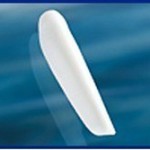In Asian rhinoplasty, one of the principle elements of its treatment is dorsal augmentation. This can be done using a silicone nasal implant or the autologous option can be done using a rib graft. Because of its ease of use and that it spares the patient a donor site, silicone nasal implants are widely used around the world particularly in many Asian countries.
Despite the effectiveness of its use, silicone nasal implants are a synthetic material. As a result, they do have a well known potential for complications including infection and migration. The very feature that makes them easy to use (smooth and non-adherent surface) is exactly what can lead to its potential complications.

Over the three year study period, there was a 10% incidence of complications including deviation, persistent redness, infection (1%) and dissatisfaction with the height of the dorsal augmentation. This lead to a 9% revision rate for corrections. No significant differences in these complications occurred between primary and secondary rhinoplasty.
A composite nasal implant places a 0.3mm layer of PTFE (Gore-Tex) on the silicone surface. Given that Gore-Tex implants have a history of tissue ingrowth into their surface, this would theoretically make them more biocompatible and less prone to complications. To date the theoretical benefits to composite nasal implants have not been substantiated in a large clinical study until this report.
While no synthetic material implanted in the face will ever be free of complications, the addition of a PTFE coating onto a nasal implant appears to offer some clinical advantages over non-coated silicone nasal implants. Whether their long-term results will be more favorable than uncoated implants in rhinoplasty can not be determined from this study.
Dr. Barry Eppley
Indianapolis, Indiana


